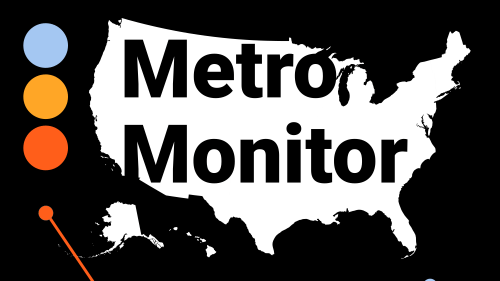In November 2021, Brookings Metro hosted a three-part webinar series on how to design and deliver a high-impact inclusive economic indicators project. This webinar series conveyed information from the roadmap and brought in real-world experiences to empower local leaders to begin similar efforts in their communities. We have made available the webinar recordings here: Part 1, Part 2, Part 3.
In 2020, Brookings Metro ran an Inclusive Economic Indicators Lab to help three regions—Indianapolis, Memphis, and Orlando—develop compelling and influential indicators projects that use metrics to drive more inclusive local economic outcomes. Like their counterparts in an increasing number of U.S. cities and metro areas, Lab participants embraced a vision of economic success defined by not only the quantity of economic growth, but also the distribution of that growth among a region’s residents—particularly those who have historically faced economic exclusion.
This roadmap distills experiences and lessons from the Lab, offering a flexible framework and case-study examples that can help interested regions develop an inclusive indicators project and understand the choices inherent in that process. The framework identifies three phases, beginning with steps to set the conditions for success by identifying key stakeholders and agreeing on shared definitions and motivations for pursuing inclusive economic growth. Regional leaders then create the indicators project, honing a shared vision, identifying indicators and metrics, and testing and refining each iteratively. From there, they put the indicators to work by strategically communicating the results and embedding the indicators into as many organizational strategies as possible.
Overview of the inclusive indicators roadmap

Phase 1: Set the conditions for success
Undertaking a process to measure inclusive growth can help a region’s leaders better define their desired outcomes and deepen collective commitment to pursuing them. In this first phase, a “core organization” leading development of an indicators project fosters shared understanding on what inclusive growth means, why it’s an important vision, who must be involved in seeding it, and what role metrics themselves will play.
Key steps core organizations undertook in Phase 1:
Commit to inclusive economic growth: Connect with a wide set of regional actors to ensure the project reflects the values and objectives of growth-focused (e.g., business, economic development) and equity-focused (e.g., philanthropic, community development) organizations.
Identify key stakeholders and roles: Assess regional actors for their potential impact on inclusive growth within the region, and how much influence core organizations have on the activities of those organizations, focusing on stakeholders who rank high on both dimensions.
Establish the purpose of the indicators project: Decide whether the project will be an “atlas” of economic inclusion, using metrics chiefly to communicate different dimensions of inclusive economic performance, or a “strategic dashboard” that changes how key actors deploy their resources toward measurable inclusive economic outcomes.
Read more about Phase 1 and setting the conditions for success on page 5 of the full report.
Phase 2: Create the indicators project
Having set the conditions for success, successful projects proceed in Phase 2 to framing, creating, and testing the indicators themselves.
Key steps core organizations undertook in Phase 2:
Develop a shared vision and framework: Articulate a shared vision of success for the region, and translate that vision into a set of key themes that form a solid framework for indicators. The vision and framework ultimately help drive shared high-level aspirations into the strategic work of individual organizations toward realizing those aspirations.
A model that links a shared vision to shared accountability
 Identify indicators: Select indicators that capture desired high-level outcomes and key drivers of those outcomes that align with the project framework (referring to Brookings Metro’s Inclusive Economic Indicators Inventory). With stakeholders, enable decisions around geographic and demographic specificity in the data, benchmarking against other regions, assessing change over time, and committing to the indicators long-term or remaining open to evolving them.
Identify indicators: Select indicators that capture desired high-level outcomes and key drivers of those outcomes that align with the project framework (referring to Brookings Metro’s Inclusive Economic Indicators Inventory). With stakeholders, enable decisions around geographic and demographic specificity in the data, benchmarking against other regions, assessing change over time, and committing to the indicators long-term or remaining open to evolving them.
Test and iterate: Engage key stakeholders to test understanding of the data, solicit feedback on what they reveal, stress-test the vision and framework, build buy-in and commitment, and identify additional organizations doing work crucial to progress on the indicators.
Read more about Phase 2 and creating the indicators project on page 12 of the full report.
Phase 3: Put the indicators to work
Indicators projects are ultimately successful if they help change behaviors—in public policy, private-sector practice, and philanthropic investment—in ways that advance inclusive economic growth and prosperity.
Key steps core organizations undertook in Phase 3:
Communicate continuously: Deliver a successful public launch of the indicators, but also commit to continuous outreach: show up and brief regional leaders on the indicators, seize opportunities to connect the indicators to pressing local issues, and consider using “real-time” data to fill in gaps between regular indicator updates.
Coalesce around ambitious but achievable goals: Work with relevant stakeholders to set a select number of shared goals based on the indicators, using benchmarks to set annual targets to improve regional performance on key inclusive economic drivers.
Drive goals into organizational plans: Embed these goals into the organizational plans and key performance indicators of relevant stakeholders, including core organizations themselves. Publicize progress over time to maintain accountability and visibility.

Embedding inclusive economic indicators into a region’s DNA is much more of an exercise in civic muscle-building than a sprint for empirical exactitude. While every region may approach the exercise from a unique starting point, the Brookings Metro Inclusive Economic Indicators Lab revealed experiences and best practices that we believe are relevant for any region considering using metrics to drive more inclusive growth.







